Neri Oxman on designing our own natural ecology
2018 Wallpaper* Guest Editor Neri Oxman presents ‘Material Ecology’ at Museum of Modern Art in New York, a compelling retrospective of the scientist’s 20-year career
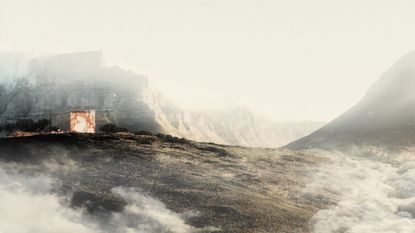
The luminosity of Neri Oxman – the MIT professor of media arts and sciences, who also comfortably straddles the realms of architecture, design and invention in her work – too often precedes her. Known for her groundbreaking research in materials, buildings and construction processes, the breadth of Oxman’s work has not been easy to quantify, that is until now.
‘Neri Oxman: Material Ecology’ at MoMA
Opening this week at the Museum of Modern Art, ‘Neri Oxman: Material Ecology’ is a compelling look back at the scientist’s 20-year career. Named after the term she coined to describe her approach of fusing organic design, material science and digital fabrication technology to produce new techniques and objects informed by nature, the exhibition highlights seven research projects that Oxman has created along with the Mediated Matter Group, which she founded and directs at MIT, to propose a new biotech future that is truly within our grasp.
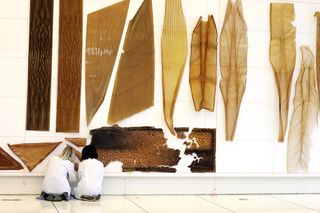
Aguahoja I by Neri Oxman and The Mediated Matter Group, 2018. The Aguahoja Artifacts Display: A catalog of material experiments spanning four years of research. Photography: The Mediated Matter Group. Courtesy, The Mediated Matter Group
Neri Oxman at the exhibition preview
‘Ecology is the science that defines relationships between organisms and other organisms, and/or organisms and the natural environment,’ Oxman explains. ‘Material ecology basically aims to place materials; things that are artificially made i.e, designed, in the context of natural ecology. And the hope is that in the future, we will design with natural ecology in mind, such that all things will relate, adapt, respond to the natural ecology. The vision, of course, is that in the future, one will not be able to differentiate or separate between the natural and the artificial, for good and for bad.’

Lazarus by Neri Oxman and The Mediated Matter Group, 2016. Produced by, and in collaboration with, Stratasys, Ltd. Courtesy The Mediated Matter Group
She adds, ‘We are now at a very exciting moment where we can design nature herself. So with the appearance of tools, techniques and technologies associated with synthetic biology, we can basically re-envision, reimagine, augment, make better, heal the environment and nature as we know it. Where does design stand in this crossroads and what are the technological and ethical implications of this? I think my team and I stand in that crossroad physically, but also mentally challenging some of the questions that design and designers face at that intersection between biology and technology, nature and culture, and the melding and fusing of the two.’
The seven projects on display, which date from 2007 to the present, showcase several examples of Oxman’s line of inquiry. Inspired by the observations of sources such as the configurations of bark on birch trees, the characteristics of crustacean shells, and even the nature of melanin, each project makes a compelling case for the future of building and design on its own, but even more so when the viewer can envision them overlapping with each other.
‘Silk Pavilion II’
The most dramatic articulation of Oxman’s research is undoubtedly the show’s centrepiece, ‘Silk Pavilion II’ – a site-specific commission for the museum, which builds on her original fabrication of an architectural structure that harnesses silkworms’ ability to spin silk from 2013.
This new iteration throws kinetic manufacturing into the process - working over ten days, a swarm of 17,000 silkworms were deployed horizontally over a water soluble knit draped over a stainless steel frame. A rotating mandrel guided their spinning upwards as they progressed, while changes in light and heat helped to manipulate them into creating different degrees of density to suit the tension and form of the structure. Not only does the piece express the relationship between digital and biological fabrication at an architectural scale, it builds upon that by taking into account the natural behaviour of the silkworms, which further influences the architectural form, while also treating their metamorphic process in the most respectful and humane way possible.
Wallpaper* Newsletter
Receive our daily digest of inspiration, escapism and design stories from around the world direct to your inbox

Silk Pavilion by Neri Oxman and The Mediated Matter Group, 2013. Pictured here is the view through Silk Pavilion apertures as the silk worms skin the structure. Photography: The Mediated Matter Group. Courtesy, The Mediated Matter Group
Paola Antonelli on Neri Oxman's ‘Material Ecology’
‘There are seven projects for which these beautiful artefacts are demos,’ says MoMA’s senior curator of architecture and design, Paola Antonelli. ‘You see here a pavilion that might not have a precise function yet, but it’s function is to demonstrate how you can actually work with [thousands of] silkworms, have them lead a happy life, and do something together that is copacetic, not only with human beings, but with silkworms and nature.’
‘We have not included some of the final embodiments that people might perceive and better understand as the design object, which at this moment I so greatly appreciate and admire about Paola,' Oxman reflects, 'It was the right thing to do and I am very, very proud of bringing process to the level of product and allowing the visitor to appreciate and gain respect for how things are made and why they are important.’
INFORMATION
‘Neri Oxman: Material Ecology’ at MoMa 22 February - 25 May
oxman.com
moma.org
ADDRESS
11 W 53rd St
New York, NY
10019
Pei-Ru Keh is a former US Editor at Wallpaper*. Born and raised in Singapore, she has been a New Yorker since 2013. Pei-Ru held various titles at Wallpaper* between 2007 and 2023. She reports on design, tech, art, architecture, fashion, beauty and lifestyle happenings in the United States, both in print and digitally. Pei-Ru took a key role in championing diversity and representation within Wallpaper's content pillars, actively seeking out stories that reflect a wide range of perspectives. She lives in Brooklyn with her husband and two children, and is currently learning how to drive.
-
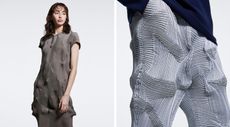 Get to know Issey Miyake’s innovative A-POC ABLE line as it arrives in the UK
Get to know Issey Miyake’s innovative A-POC ABLE line as it arrives in the UKAs A-POC ABLE Issey Miyake launches in London this week, designer Yoshiyuki Miyamae gives Wallpaper* the lowdown on the experimental Issey Miyake offshoot
By Jack Moss Published
-
 Eurovision unveils its 2024 stage, designed by Beyoncé's Renaissance Tour creatives
Eurovision unveils its 2024 stage, designed by Beyoncé's Renaissance Tour creativesThis year's stage design aims to bring the audience into the performance more than ever before.
By Charlotte Gunn Published
-
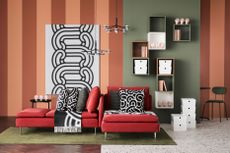 Ikea meets Japan in this new pattern-filled collection
Ikea meets Japan in this new pattern-filled collectionNew Ikea Sötrönn collection by Japanese artist Hiroko Takahashi brings Japan and Scandinavia together in a pattern-filled, joyful range for the home
By Rosa Bertoli Published
-
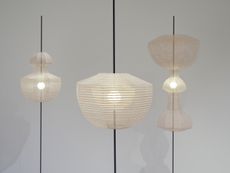 Nendo’s collaborations with Kyoto artisans go on view in New York
Nendo’s collaborations with Kyoto artisans go on view in New York‘Nendo sees Kyoto’ is on view at Friedman Benda (until 15 October 2022), showcasing the design studio's collaboration with six artisans specialised in ancient Japanese crafts
By Pei-Ru Keh Last updated
-
 Italian craftsmanship comes to Los Angeles in this eclectic Venice Canals apartment
Italian craftsmanship comes to Los Angeles in this eclectic Venice Canals apartmentBoffi Los Angeles celebrates a juxtaposition of texture throughout a waterside bolthole
By Hannah Silver Last updated
-
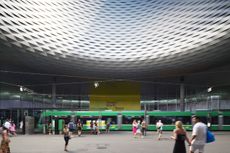 Design Miami/Basel 2022 explores the Golden Age
Design Miami/Basel 2022 explores the Golden AgeDesign Miami/Basel 2022, led by curatorial director Maria Cristina Didero, offers a positive spin after the unprecedented times of the pandemic, and looks at the history and spirit of design
By Rosa Bertoli Last updated
-
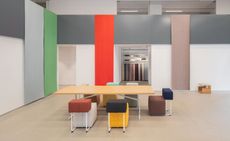 Kvadrat’s flagship New York showrooms encompass colourful design codes
Kvadrat’s flagship New York showrooms encompass colourful design codesIndustrial designer Jonathan Olivares and architect Vincent Van Duysen have worked with Danish textile brand Kvadrat on the vast new space, also featuring furniture by Moroso
By Hannah Silver Last updated
-
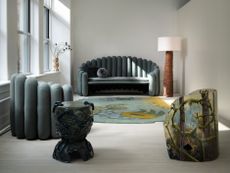 What to see at New York Design Week 2022
What to see at New York Design Week 2022Discover Wallpaper’s highlights from New York Design Week 2022 (10 – 20 May 2022): the fairs, exhibitions and design openings to discover
By Pei-Ru Keh Last updated
-
 Colour defines LA ceramics studio and showroom of Bari Ziperstein
Colour defines LA ceramics studio and showroom of Bari ZipersteinStep inside the multifunctional ceramics studio, office and showroom of designer and artist Bari Ziperstein, designed by local firm Foss Hildreth
By Pei-Ru Keh Last updated
-
 Design for Ukraine: Bocci and Design Miami join forces to raise funds
Design for Ukraine: Bocci and Design Miami join forces to raise fundsThe online sale of iconic Bocci pieces will benefit GlobalGiving’s Ukraine Crisis Relief Fund, providing urgently needed humanitarian aid
By Rosa Bertoli Last updated
-
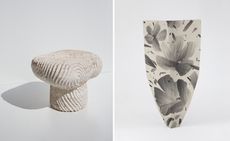 The Future Perfect celebrates materiality in new Los Angeles exhibition
The Future Perfect celebrates materiality in new Los Angeles exhibitionCoinciding with Frieze LA, a new exhibition titled ‘Momentary Pause’ (17 February – 18 March 2022) explores material-based practices that inspire change
By Hannah Silver Last updated